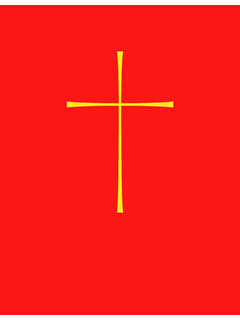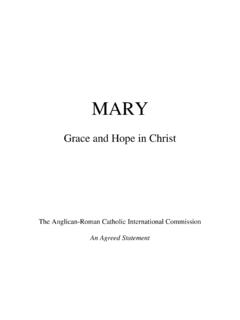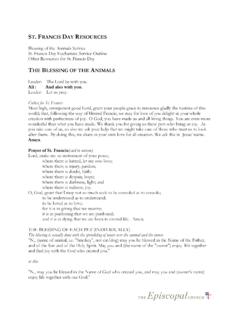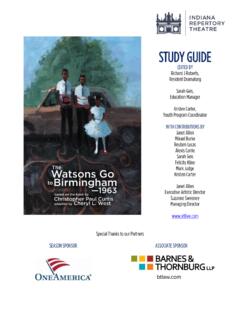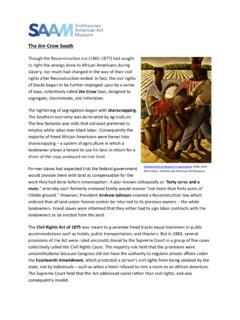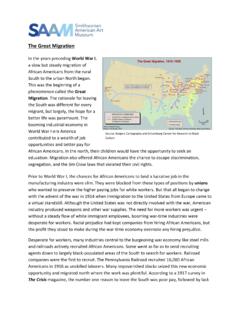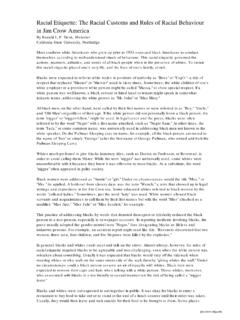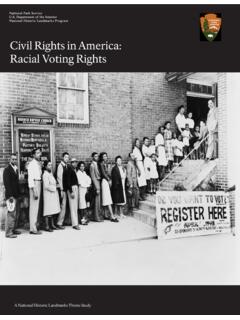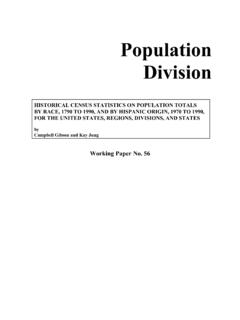Transcription of Z Magazine Interview - Episcopal Church
1 Z Magazine : An Interview with Noel Ignatiev In the historical literature on race relations, there is much that safely can be ignored. However, from time to time a study comes along that truly can be called path-breaking, seminal, essential, a must-read. How the Irish Became White is such a study. Noel Ignatiev has produced that rare work of historical scholarship that, while firmly grounded in past events, also speaks forcefully to current concerns.. Prof. John Bracey, DuBois Dept. of Afro-American Studies University of Massachusetts at Amherst . Danny Postel Q: What exactly do you mean by your book's title? How did the Irish become white? A: In the epilogue to The Autobiography of Malcolm X, Alex Haley tells a story about being with Malcolm at the airport when they saw a plane landing from Europe. The east European children getting off the plane were dressed in their traditional clothing.
2 Malcolm turned to Haley and said, Pretty little children. Soon they're going to learn their first English word: nigger.. What my book is about is how an earlier group of immigrants, the Catholic Irish . the first non-Protestant, non-Anglo group of European immigrants to arrive, at the beginning of the 19th century, around the period when industrialization was beginning to take place learned the American racial set-up and found their place in it. When I say that the Irish became white what I hark back to is that in Ireland the Catholics were victims of a kind of discrimination which in many respects was parallel and analogous to what we, in the United States, call racial discrimination- although there's no visible, physical type difference between Catholics and Protes- tants in Ireland. Notwithstanding this, if there were any people who were racially oppressed in Ireland it was the Catholics, who then came to the United States and found a new situation in which there was a color line something they weren't familiar with, something they had no experience with.
3 It was something they had to learn. They had to learn what it meant, how it operated, and how to find their own place in it. So what I'm really talking about is how the Irish went from being members of an Four Issues of Race Traitor: oppressed race in Ireland to being members of an oppressing race in the United $20 INDIVIDUALS. States. The period that the book covers begins in the 1790s and closes in 1877, $40 INSTITUTIONS. but the real heart of the book is the 1830s and 1840s, when I think the decisive Current Issue $6 postpaid. elements fell into place. Send check or money order to: RACE TRAITOR Q: In the book you compare the situation of the Irish prior to their emigration to PO Box 603 that of black folks in the during the same period. Just how oppressive was it Cambridge, MA 02140-0005 for the Irish in Ireland? A: Ireland was governed by the penal codes for most of the 18th century and into the period where my study begins.
4 Catholics were not permitted to vote or serve in Race Traitor Journal of the New Abolitionism Parliament or hold public office of any kind; they weren't allowed to practice law or serve in the military or civil service; they couldn't open or teach at a school, or serve as tutors; they weren't allowed to attend universities or send their children abroad to school; they weren't allowed to manufacture or sell arms, newspapers or books, or possess them; they couldn't own a horse worth more than a few pounds; they were barred from apprenticeships in most of the trades; they were limited in the kind of land they could rent; they had no inheritance rights (a Catholic could convert to Protestantism and disinherit his father, in fact his entire family); priests were not allowed to travel in Ireland; Bishops were banned from the country; and the list goes on.
5 I suppose it can be captured best by citing an 18th century Anglo-Irish Prot- estant judge who said that the law presupposes no such person to exist as an Irish Roman Catholic which is parallel, of course, to Judge Taney's dictum in the Dred Scott case that a Negro has no rights that a white man is bound to respect. In all important respects, the Irish Catholics were treated as an oppressed race in Ireland. This is the background they were coming from when they arrived on American soil. And there was a kind of life Q: You describe in the book how this background provided a context for inter- action between the Irish and the blacks they encountered in America. But among the lowly.. things changed dramatically from the Irish initially identifying with black In the early Americans and their situation to later violently dis-identifying with them.
6 Minstrel stage, What was responsible for this shift? along with A: During the period I examine in the book, from the 1820's onward, the the stock black Catholic Irish who came over here came from the poorer classes. Not necessar- characters Jim crow ily the poorest and most desperate-that emigration didn't really begin until and Jim Dandy, the famine in the mid 1840's. But they certainly came from the poorer classes of society, and when they came they were, in the words of Mr. Dooley the old there were the Chicago columnist Peter Finley Dunn given a shovel and told to start digging Irish characters the place up as if they owned it. Pat and Bridget . They were used for dangerous, brutal labor on the railbeds and canals, some- objects of scorn times working alongside black laborers. In the South, they were sometimes and ridicule.
7 Used in dangerous situations where it didn't make good sense to risk the life of a valuable slave. As one person put it, Let the paddys do the work if one of them gets thrown overboard or breaks his neck, it's nobody's loss.. As they moved into the big cities, they were thrown into the same districts with free black folks in the North, and in the South New Orleans, the Irish channel, the rookeries. And there they socialized. They fought each other, they fought with the police, they fought with everybody everybody fought with everybody. That was the American city of the 1820's and 1930's: a war of each against all. In a lot of respects they developed a common culture, as well. There was some intermarriage. And there was a kind of life among the lowly. In the early minstrel stage, along with the stock black characters Jim crow and Jim Dandy, there were the Irish characters Pat and Bridget objects of scorn and ridicule.
8 Q: You point out that at one point the Irish were known as white Negroes . Race Traitor Journal of the New Abolitionism and black people were referred to as smoked Irish. What did those terms reflect? Essentially what A: They reflected the scorn and disdain with which both were regarded by the better situated, by the leading elements of American society. There was specu- happened was lation that there would be some amalgamation, that is, that Irish and black the Irish became would blend into each other and become one common people. That didn't white. That is, happen; in fact, the opposite happened. rather than aligning Q: What exactly happened? with black they chose, by and A: Essentially what happened was the Irish became white. That is, rather than large, to find a way aligning with black people free and slave to overthrow the system of sla- very and racial oppression which prevailed in the United States, they chose, to gain for them- by and large, to find a way to gain for themselves a favored position within it.
9 Selves a favored position within it. In 1841, the Irish political leader (in Ireland) Daniel O'Connell he was some- thing of a combination of Martin Luther King and Gandhi, the most popular figure among Irishmen throughout the world issued an appeal he and 70,000. others in Ireland to the Irish in the United States, calling upon them to join with the abolitionists in America, to join the struggle to overthrow slavery. Treat the Negro everywhere as your equal, your brother, he said, and in doing so you will bring honor to the name of Ireland. O'Connell was speaking from a situation where Catholics in Ireland were members of an oppressed race. He was the leader of their movement to overturn that kind of subjugation. So he naturally reached out for alliances with the struggle against racial injustice everywhere. The Irish in America rejected him.
10 He went so far as to say if you don't do this, then we won't recognize you as Irish. They thought about it and concluded, okay, if you force us to choose between our love for Ireland and our attach- ment to the institutions of our new country, then it's South Carolina forever. What they decided to do was integrate themselves into American life as citi- zens, invoking the privileges of whiteness. Having fair skin made the Irish eligible to be white, but it didn't guarantee Having fair skin their admission. They had to earn it. made the Irish Q: And how were they supposed to earn it? eligible to be white, but it A: There were two things they had to do. First, they had to distance them- didn't guarantee selves as much as possible from the black population of North America. They had to do whatever they possibly could to create barriers, to insulate them- their admission.
